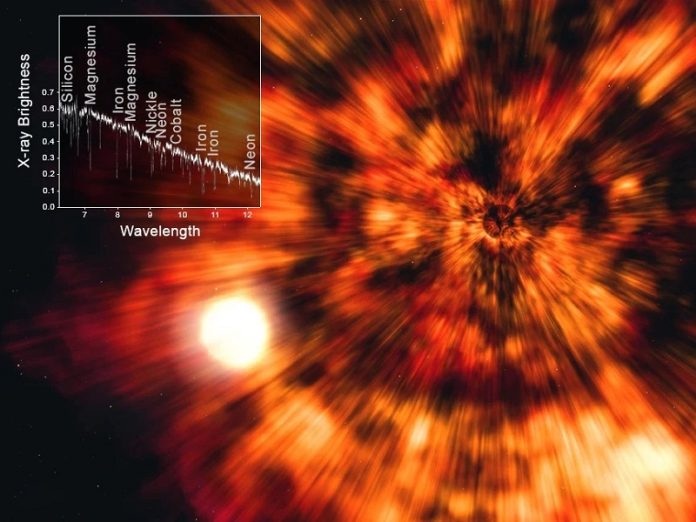
One of the common misconceptions about black holes is that they devour not only matter, but also the history of that matter.
So when a black hole forms, you can only guess how it came to be. That isn’t entirely true.
Informational history is only lost when matter crosses the event horizon, and perhaps not even then.
The material surrounding a black hole still has a rich history.
In a recent study, astronomers have used that history to uncover the origins of a black hole system.
The story begins with a system known as GRO J1655-40. It’s a binary system containing a black hole of about seven solar masses and a companion star of more than three solar masses.
Given what we understand about stars, the system was originally comprised of two stars, but the larger star exploded as a supernova to become a black hole. This means that the current system contains a star, a black hole, and the remnant debris of the exploded star.
To understand the history of this system, the team looked at 2005 data from the Chandra spacecraft, taken when the system was particularly bright in the X-ray range. Since Chandra captured spectra data of the system, the team could use that to identify various elements in the system. They were able to identify the presence and relative abundances of 18 elements.
This is where the astronomical archeology comes in. The elements produced in a stellar core depend on the initial mass and composition of the star. By looking at the 18 elements and their abundances, the team reconstructed the characteristics of the original star.
They found that the progenitor of the black hole had a mass of 25 Suns, dwarfing its companion star. This means that most of the matter from the original star has been cast off into interstellar space, either by the original supernova explosion or by subsequent stellar winds generated by the system over time.
This kind of reconstruction allows astronomers to look at how binary stars evolve and how large stars become black holes or neutron stars. By using this method on other systems, we should be able to better model the dynamics of dying stars.
Written by Brian Koberlein/Universe Today.



